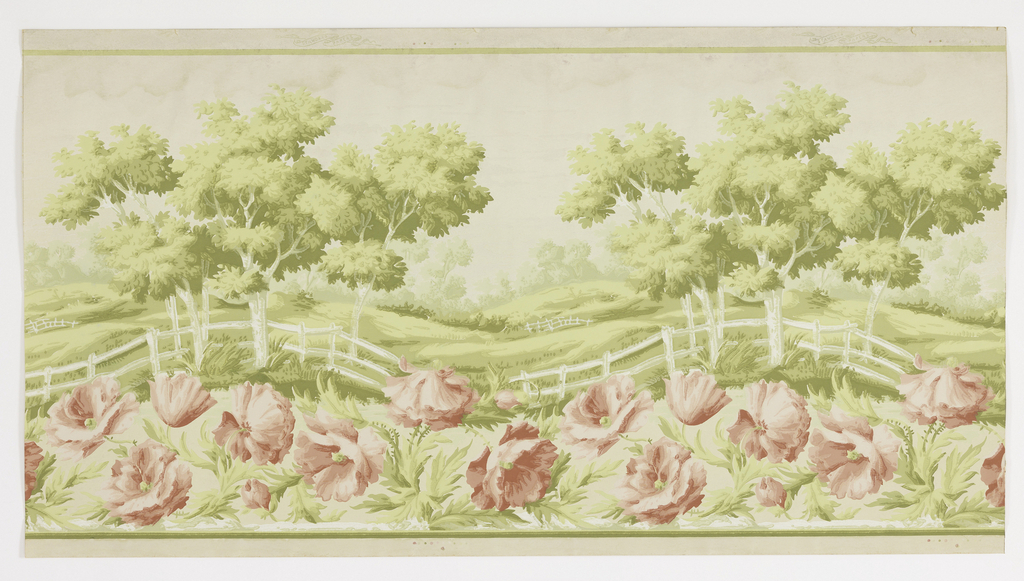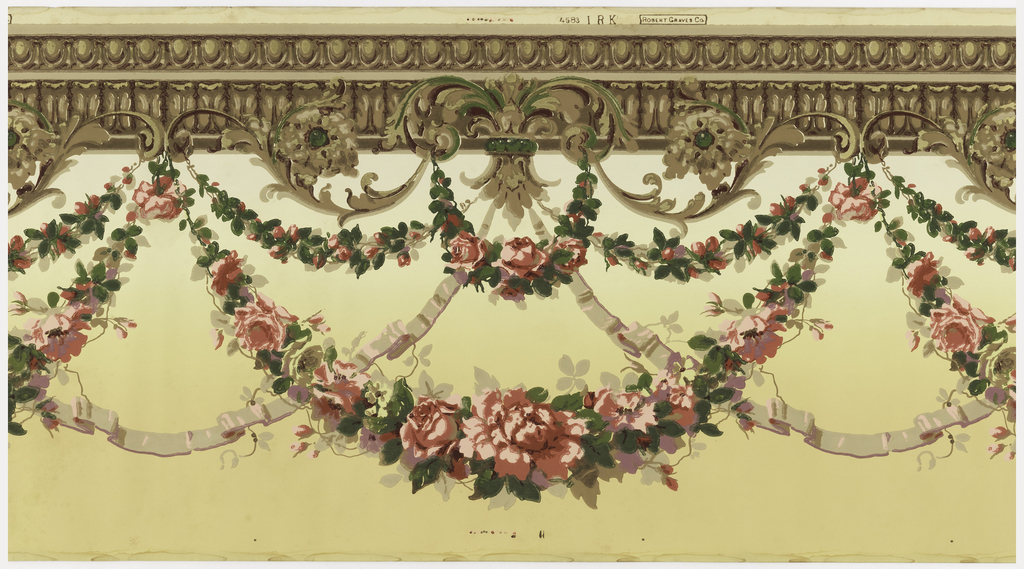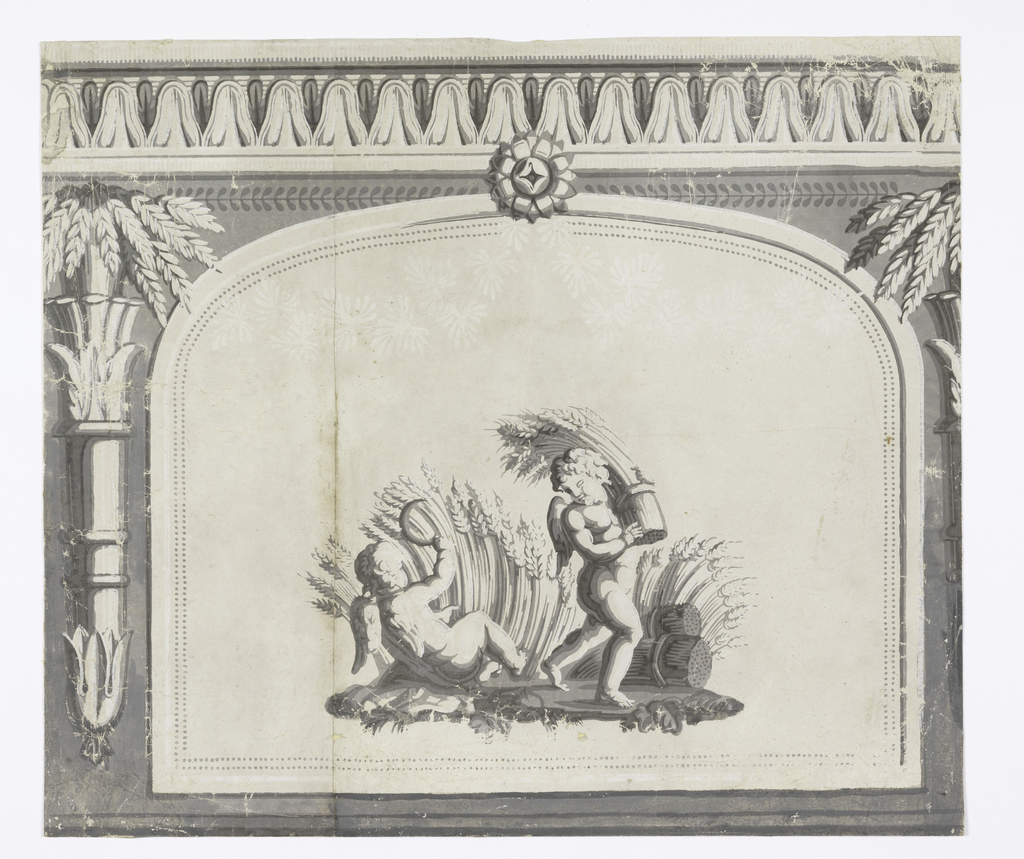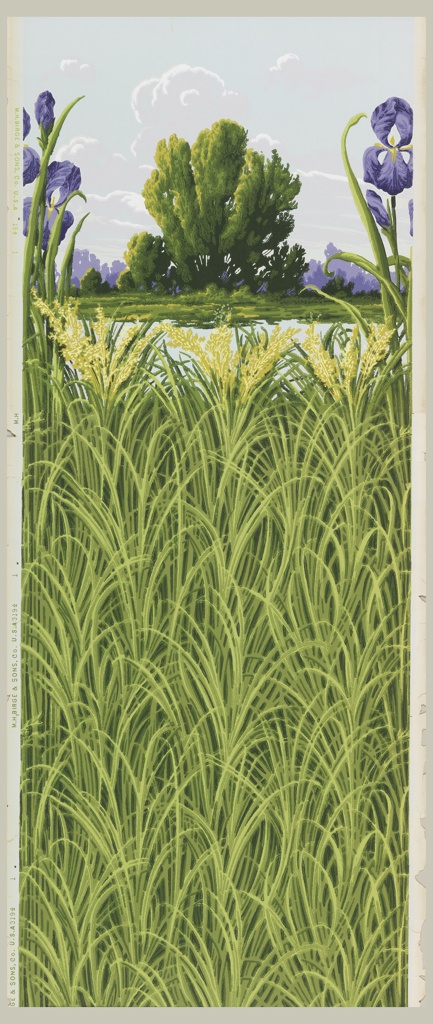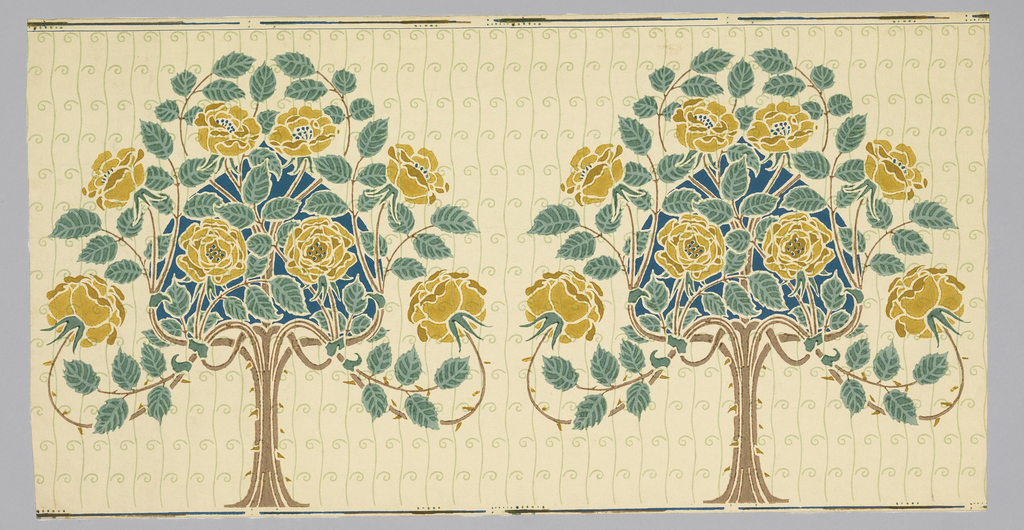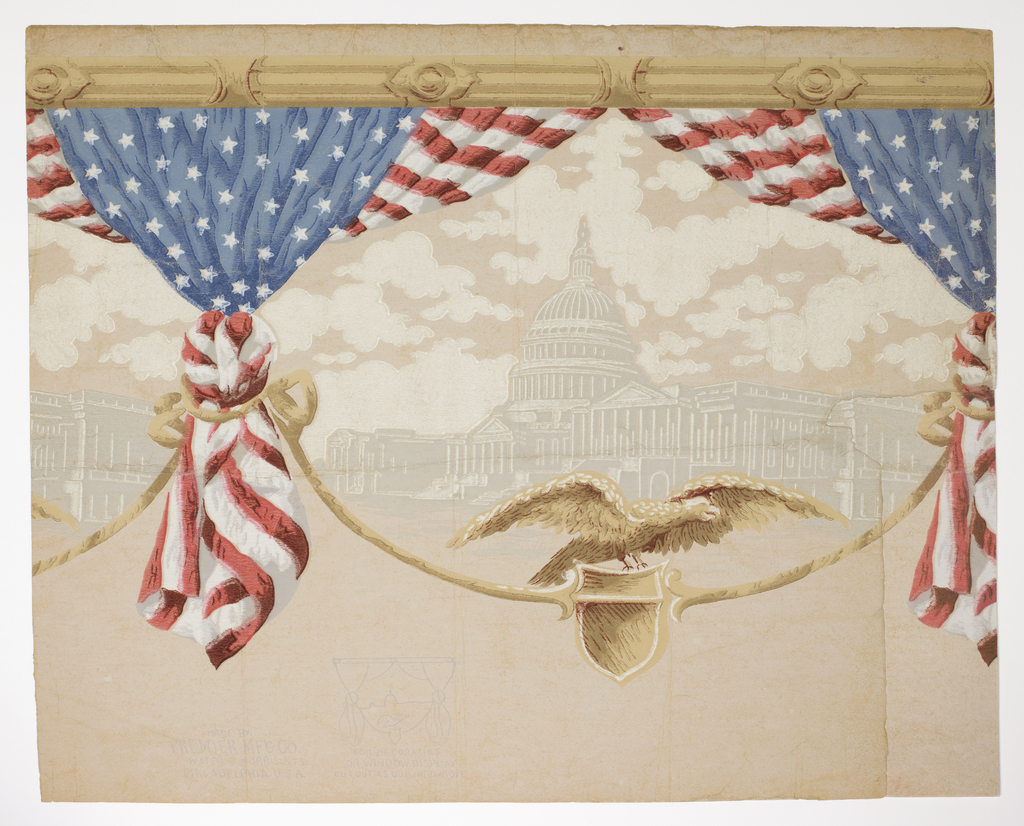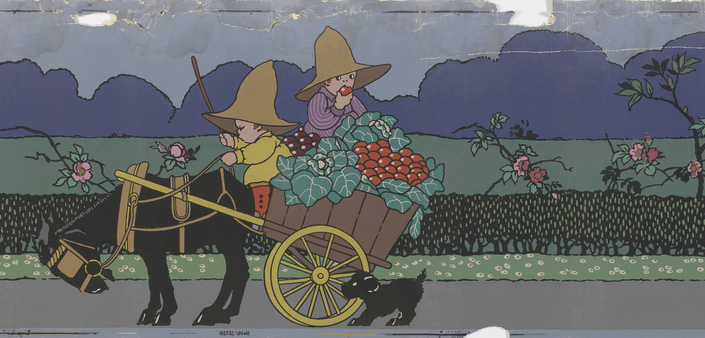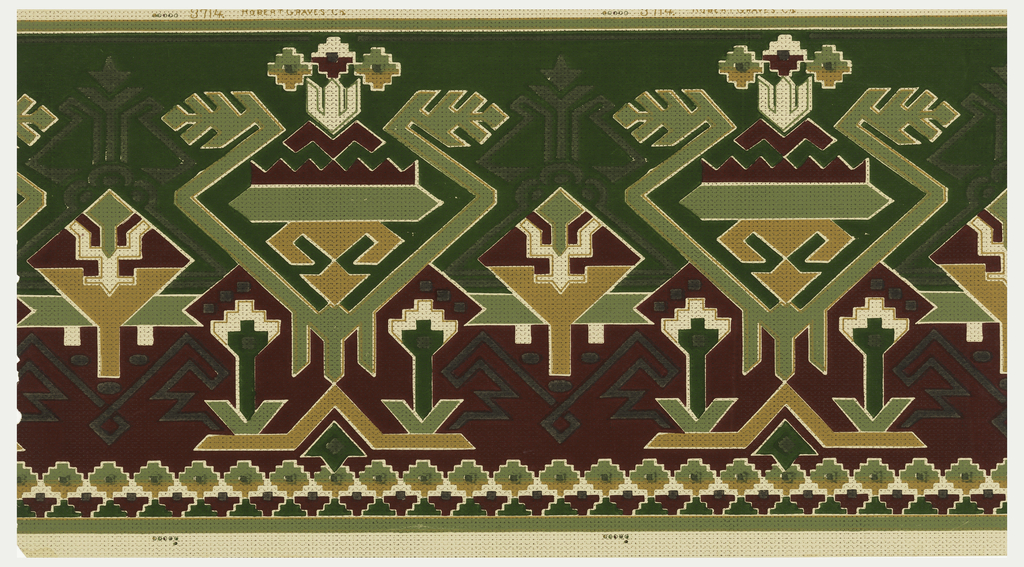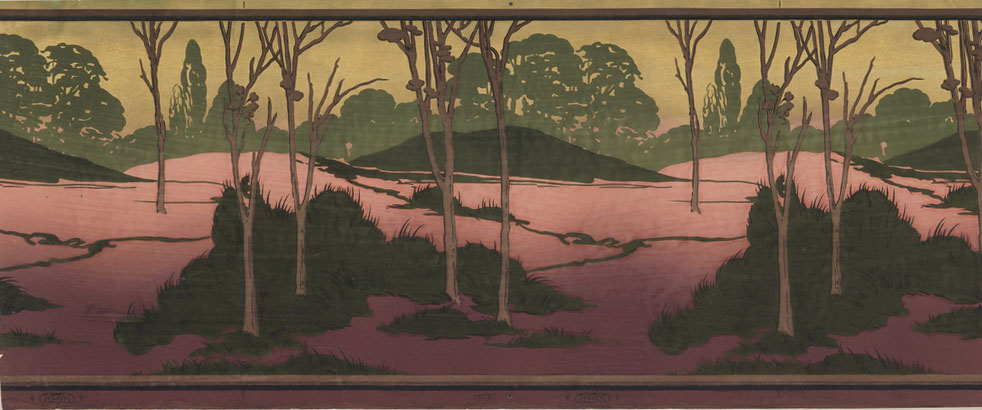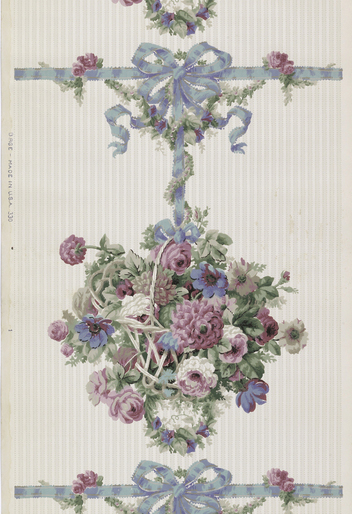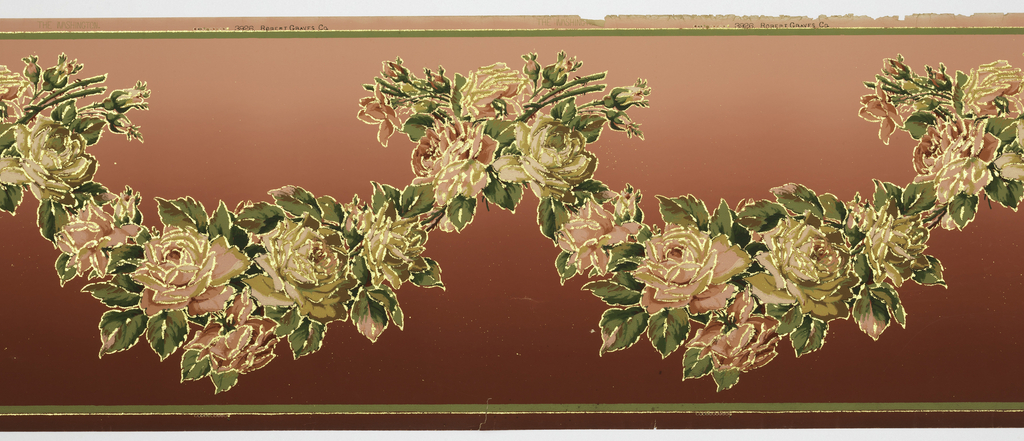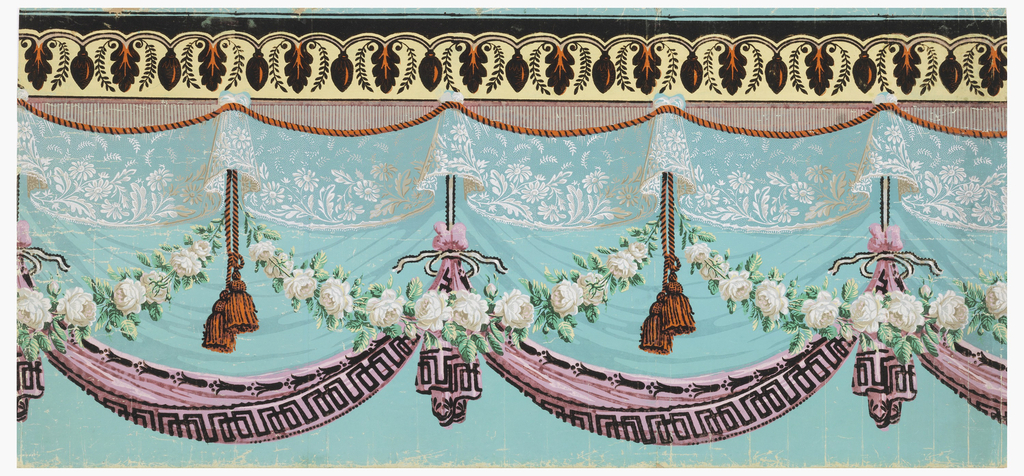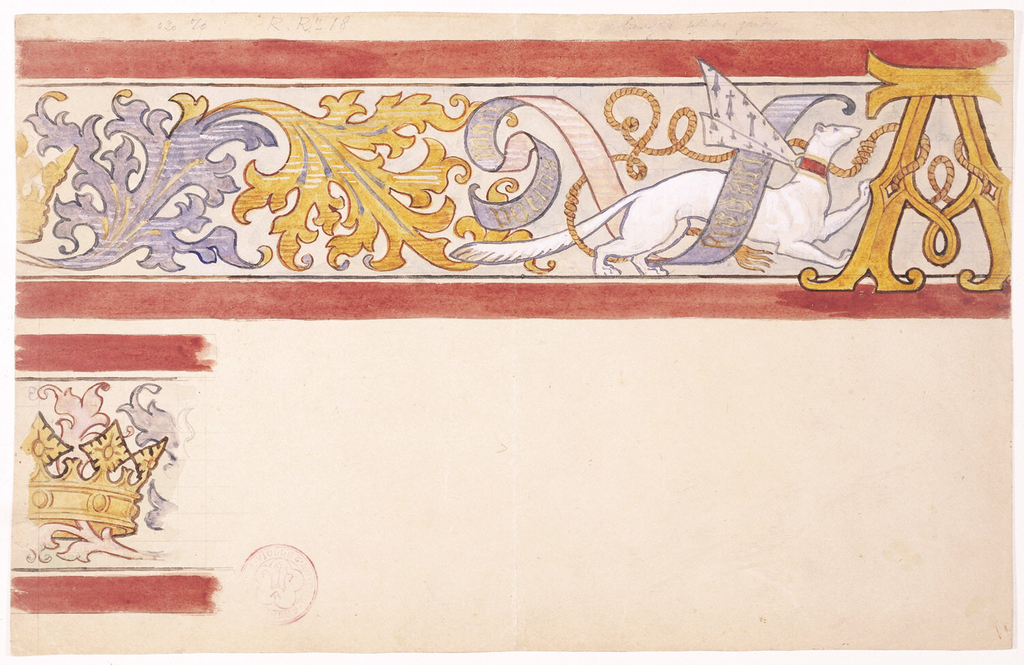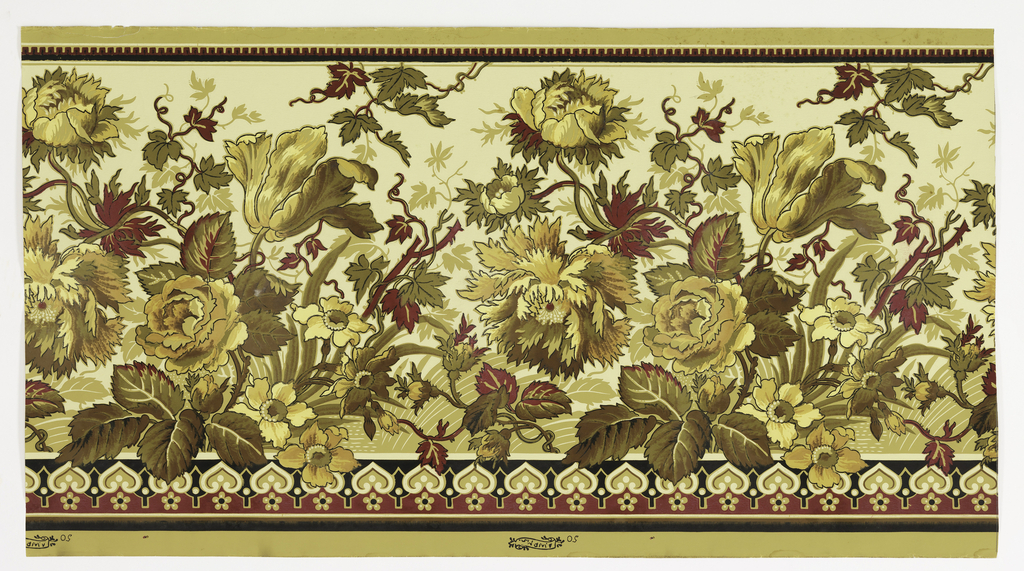This is a fun frieze, also known as a wide border, produced in America during the early years of the twentieth century. It captures a bucolic scene of rolling hills, white picket fences, and fields of red poppies. I almost expect to see horses trotting by, or cows grazing. The design has a deep perspective...
I decided to blog about this floral swag frieze produced in the early twentieth century. The design is fairly typical for the period with large floral swags, which here alternate with ribbon swags, suspended from pendant fixtures projecting from an architectural molding. What is unusual about this paper is the width, measuring in at thirty...
I came across this frieze paper and the image seemed a little unusual. The whole theme of the paper is wheat. Printed in grisaille, or shades of gray, this frieze is a trompe l’oeil design with a large inset panel as the main element. A wide architectural molding runs across the top edge, with a...
Wallpapers were rarely designed to be used alone, and fashions in wall treatments changed frequently. In the early twentieth century, wall treatments began to get simpler, consisting of a wallpaper and wide border, or frieze, and it remained popular to paper ceilings into the 1950s. This turf design is part of a matching set of...
This is a wallpaper frieze containing stylized rose bushes printed on a striped and swirled ground, while an upside down heart motif placed behind the bush defines the shape of the climbing roses. The motif of the rose vines is nearly symmetrical and the delicacy of the scrolling and curving vines shows the influence of...
I thought while everyone is in the Fourth of July holiday mode it is a good time to write about a patriotic wallpaper, or rather a border. Since I’ve already written in years past about the firecracker wallpaper created for the American Bicentennial, and a scene from Views of the American War of Independence showing...
I have long admired the wide children’s borders, also called friezes, designed and produced in the early twentieth century, prior to the Great Depression in 1929. Cooper Hewitt has a fair collection of these with the most popular being Winnie the Pooh, produced ca. 1926, coinciding with the release of the book by A.A. Milne...
This frieze by the New York-based Robert Graves Co. is an excellent example of the use of Native American motifs in American design at the turn of the century. Though this was an age that saw an unprecedented suppression of native culture, Native American art itself saw an unprecedented wave of appreciation and praise, particularly...
I have always been fond of landscape friezes and I sometimes wish I lived in a nice bungalow where I could actually use some of these different wall treatments to best effect. I’ve probably mentioned before that wide landscape friezes were popularized by Walter Crane when he introduced his May Tree frieze in 1896, and...
I find these hanging baskets rather a novel idea in home decoration. These are used in place of the wide friezes that became popular in the very late years of the nineteenth century. Wide friezes were printed on the paper in a horizontal fashion, which makes perfect sense as that is how they were hung....
Robert Graves Co. was founded by a Brooklyn-based Irish immigrant, and was one of the most successful wallpaper manufacturies in the United States from the 1860s to the 1920s. This wallpaper frieze was made by the company c. 1905-1915, and would likely have been marketed with a coordinating sidewall and ceiling paper. It features a...
Traditionally, wallpapers have imitated more expensive materials, such as architectural details, painted wall decorations, wood grains, marble, and, most often, textiles. In the mid-18th century when wallpapered rooms became a prevailing fashion in England and France, wallpaper borders were as important a decorative element as the coverings themselves. A brilliant swag of printed paper flowers,...
French architect and theorist Viollet-le-Duc (1814-1879) spent more than half of his career restoring Gothic-era castles, cathedrals, and public buildings, including such notable projects as Notre Dame de Paris and the city walls of Carcassonne. Yet he’s often seen as a pre-modernist, influencing Henry van de Velde and even Frank Lloyd Wright. Viollet-le-Duc’s theories of...
A rather severe group of peonies, roses and other flowers grow with grape vines in a tangled mass on this wallpaper frieze of the late-nineteenth century. Dark outlines and blocky coloring causes the blossoms to appear stylized and two-dimensional. Instead of subtle shading, the illusion of depth is created by overlapping the floral elements. The...
This neo-classical wallpaper frieze is a broad horizontal band meant to decorate a wall near the ceiling. I was immediately drawn to the three-dimensional quality of the block-print, as well as the intricate details that can be seen in the wings, imagery on the urn, and adornments on the confronted figures. The various Greek and...
